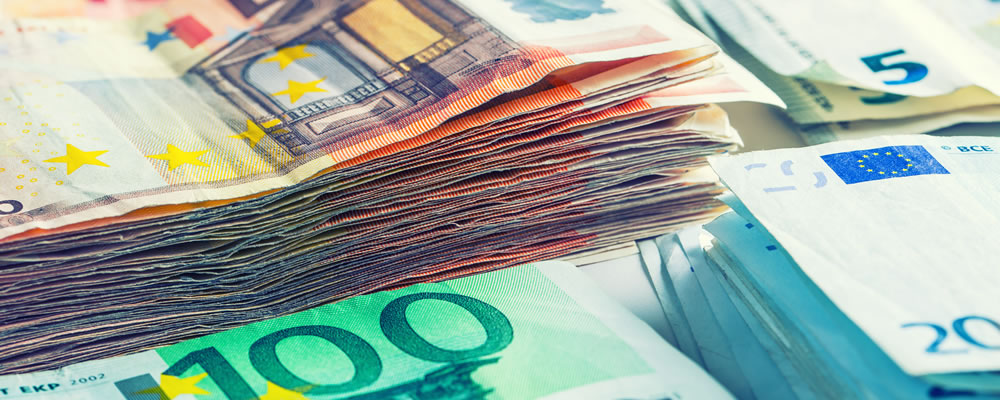With the UK economy continuing to show limited signs of a negative post-referendum impact the EUR GBP exchange rate has weakened, despite a decline in the appeal of the US Dollar.
- ECB officials stoked expectations of quantitative easing extension – Euro dented by deteriorating domestic confidence
- Surprisingly strong jump in UK retail sales boosted Pound – Consumer demand remained solid in spite of continued Brexit-based uncertainty
- Fed hike speculation struggled to support US Dollar demand – Lack of clarity over incoming political administration limited appeal of USD
- EUR USD exchange rate forecast to remain weaker in long-term – Eurozone political risk factor to rise
As the heads of the ECB and Fed are both set to speak ahead of the weekend the EUR USD exchange rate is likely to see increased volatility.
Dovish ECB Commentary Forecast to Weigh on Euro (EUR) Exchange Rates
Comments from members of the European Central Bank (ECB) have put some downside pressure on the Euro (EUR) this week, with the tone sounding distinctly dovish. Coupled with weaker-than-expected German growth data this prompted fresh speculation that the ECB’s quantitative easing program will be extended in December. With German Finance Minister Wolfgang Schäuble also pouring cold water on hopes of renewed talks over debt relief for struggling Greece the appeal of the single currency was generally limited.
Although Euro exchange rates picked up somewhat on Thursday the common currency remains vulnerable to further bearishness. Investors will be particularly sensitive to a speech from ECB President Mario Draghi ahead of the weekend, as his outlook on monetary policy is seen to carry greater weight than that of other policymakers. If Draghi is seen to offer any support to the idea of further easing then the Euro could weaken. However, should October’s German Producer Price Index point towards an increase in inflationary pressure then the single currency may find a rallying point.
EUR GBP Exchange Rate Slumped after Bullish UK Retail Sales
The latest raft of UK labour market data proved to be rather more mixed than might have been hoped on Wednesday. While the ILO unemployment rate unexpectedly fell to a fresh eleven-year low of 4.8% in the three months to September the impact of this bullish result was somewhat muted by signs that jobless claims have risen sharply in the meantime. Even so, as wage growth remained steady investors were encouraged to pile back into the Pound (GBP).
Demand for Sterling surged on Thursday morning, though, in response to surprisingly strong UK retail sales data. Sales were found to have strengthened from 4.1% to 7.4% on the year in October, an impressive jump that suggests consumer confidence has remained high. This bullish result shored up optimism in the resilience of the UK economy, with spending still solid in spite of the current atmosphere of global political uncertainty.
US Dollar (USD) Upside Bias Forecast to Persist on More Hawkish Fed Outlook
Heightened expectations of an imminent Federal Reserve interest rate hike kept the Euro US Dollar (EUR USD) exchange rate under pressure, despite worries over the state of the next presidential administration. Nevertheless, the ‘Greenback’ (USD) was knocked back by disappointing Producer Price Index and manufacturing production results, which offered evidence of softness within the world’s largest economy. Signs of faltering inflationary pressure do not appear to bode well for the US economy, although the impact of Donald Trump’s promised infrastructure spending splurge could still see inflation rocket in 2017 if it comes to pass.
While the Consumer Price Index is not the Fed’s primary gauge of inflation, the measure could still provoke volatility for the US Dollar on Thursday afternoon. Forecasts point towards a modest uptick on the year in October, a reading which would do nothing to discourage the odds of the Fed returning to the monetary tightening cycle before the end of the year.
In the longer term the trend of the EUR USD exchange rate looks set to remain biased to the downside. As Richard Fanulovich, research analyst at Westpac, notes:
‘There’s no shortage of other tailwinds that could take over and sustain strength deep into 2017; 1) a potential HIA-2, allowing multinationals to repatriate offshore earnings (the stock amounts to USD2.5trn); 2) a likely more hawkish Fed (there are two vacant seats on the Board of Governors); and 3) a rolling series of European political risks (Italian referendum Dec 2016 and Dutch, French and German elections 2017) which carry high risks of a populist backlash.’
Current Interbank Exchange Rates
At the time of writing, the Euro Pound (EUR GBP) exchange rate was slumped around 0.85, while the Euro US Dollar (EUR USD) pairing was trending higher in the region of 1.07.



